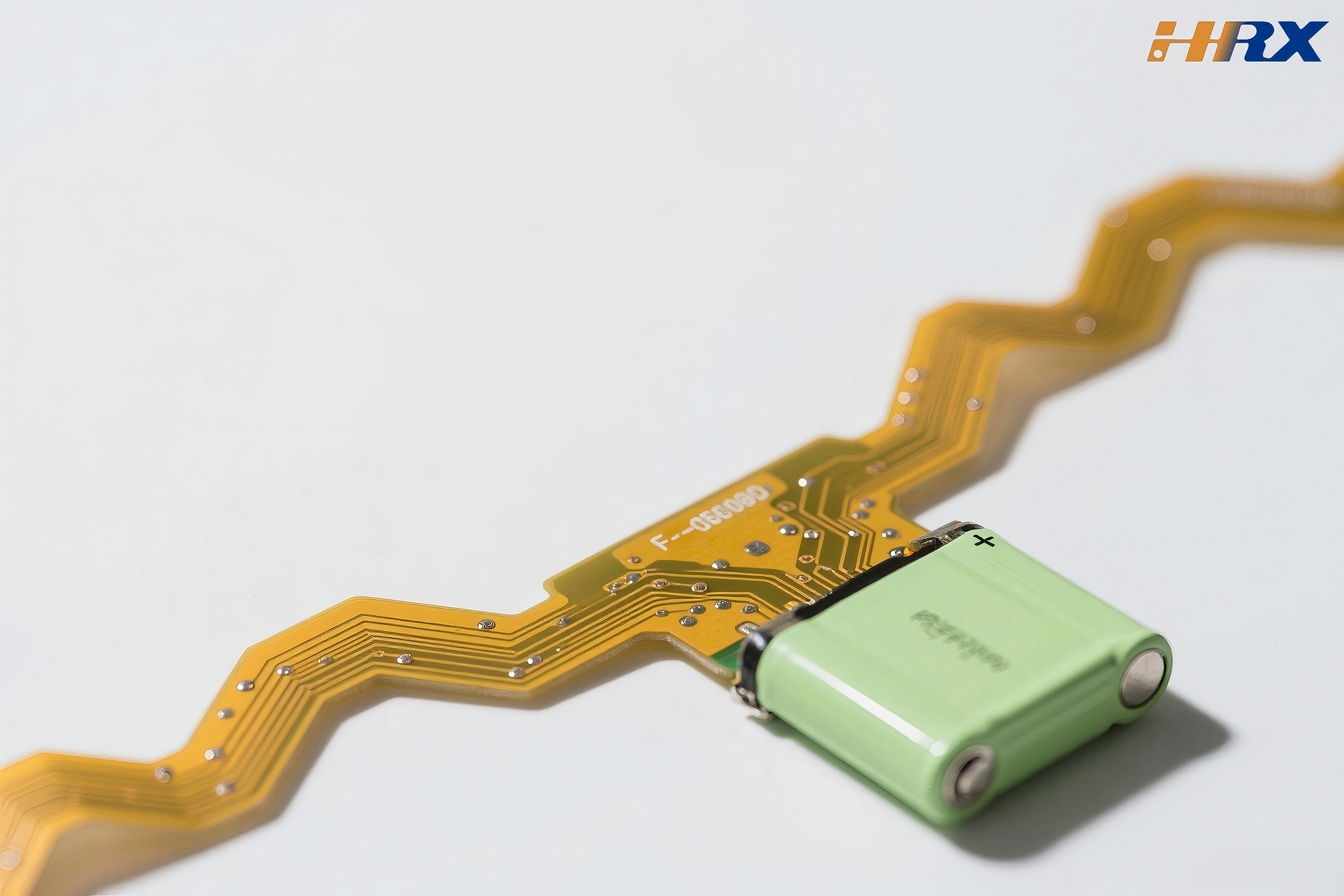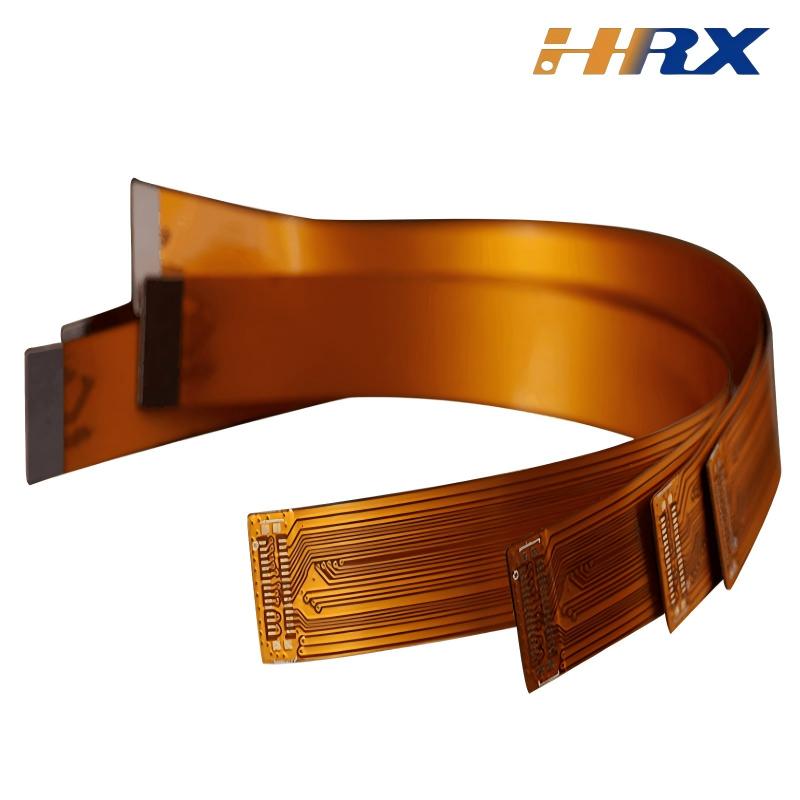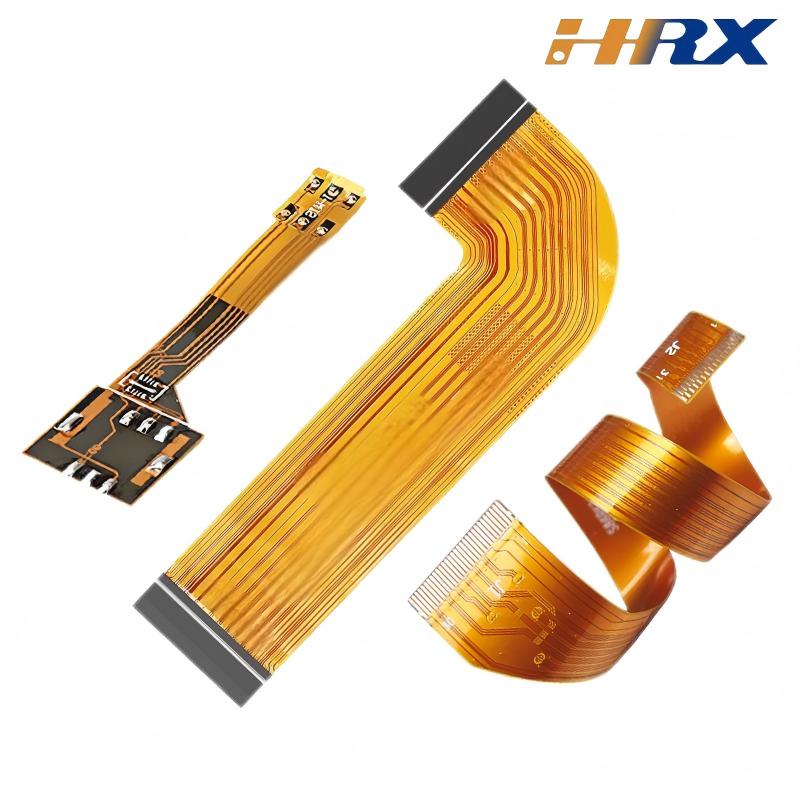Search
In - Depth Analysis: Design, Production, and Quality Control of FPCs for Battery Applications
- Jun 17,2025
-
Share
In the rapidly advancing realm of battery technology, Flexible Printed Circuits (FPCs) have become pivotal components, especially in battery management systems (BMS). Their role in ensuring the seamless and reliable operation of batteries across a wide spectrum of applications, from consumer electronics to electric vehicles (EVs) and energy storage systems (ESS), cannot be overstated. Shenzhen Huaruixin Electronics Co., Ltd., a distinguished global ODM/OEM manufacturer specializing in FPCs, PCBs, and Rigid - Flex Printed Boards, stands at the forefront of this industry with its profound expertise and cutting - edge manufacturing capabilities. Our large - scale manufacturing base, coupled with a team of highly skilled professionals, empowers us to design and produce top - tier battery FPCs that meet the most stringent industry standards. In this blog post, we will delve into the key aspects of FPCs in the battery field, covering design, production, and quality control, while sharing our professional insights and practical recommendations.

Design Considerations
Electrical Performance Optimization
Electrical performance optimization is a cornerstone in the design of FPCs for battery applications. For high - density interconnect (HDI) FPCs used in modern battery systems, meticulous planning of trace layout is imperative. Minimizing trace resistance is crucial, especially in high - current applications like EV batteries. Employing wide traces made of low - resistance materials, such as oxygen - free copper, can significantly reduce power losses. To combat crosstalk, differential signaling and proper shielding techniques are essential. Additionally, effective grounding strategies, including star grounding and ground plane design, are vital for protecting sensitive electrical signals from electromagnetic interference (EMI). In hybrid battery systems where multiple electronic components coexist, these measures ensure signal integrity. Our design team at Shenzhen Huaruixin Electronics Co., Ltd. leverages advanced CAD software, such as Altium Designer, and electromagnetic simulation tools like ANSYS HFSS, to meticulously design FPCs that meet the exacting electrical requirements of diverse battery applications.
Thermal Management
Thermal management is a critical aspect of FPC design for batteries, as batteries generate substantial heat during operation. Selecting materials with excellent thermal conductivity, such as polyimide copper - clad laminates with enhanced heat - dissipation additives, is of utmost importance. Incorporating thermal vias in strategic locations within the FPC design enables efficient heat transfer from hotspots to the battery's cooling system. Thermal interface materials (TIMs), like gap fillers and thermal greases, can be applied between the FPC and battery cells to further enhance heat dissipation efficiency. A well - engineered thermal management design not only extends the lifespan of the FPC but also safeguards the overall performance and safety of the battery system. Through years of experience, we have refined our thermal management design processes to ensure optimal performance in various operating conditions.
Mechanical Flexibility and Durability
In battery applications, FPCs often need to endure repeated bending, folding, and flexing, particularly in portable devices, wearable electronics, and flexible battery packs. The choice of flexible substrates, such as polyimide (PI) and liquid crystal polymer (LCP), and coverlay materials is crucial for achieving excellent flexibility and durability. Calculating the appropriate bend radius based on the application's requirements is essential to prevent excessive stress on the traces, which could lead to cracks and electrical failures. Our FPC designs undergo comprehensive mechanical testing, including bend cycle testing and flex fatigue testing, to ensure they can withstand the rigors of real - world usage. At Shenzhen Huaruixin Electronics Co., Ltd., we are committed to delivering FPCs with superior mechanical performance.
Production Process
Material Selection and Sourcing
The quality of FPCs is inherently linked to the materials used in their production. High - quality base films, adhesives, and copper foils are the building blocks of reliable battery FPCs. When sourcing materials, partnering with trusted suppliers who can provide consistent, certified products is non - negotiable. For battery FPCs, flame - retardant base films are often required to meet strict safety standards, such as UL 94 V - 0. At Shenzhen Huaruixin Electronics Co., Ltd., we have established long - term, strategic partnerships with leading global material suppliers. This ensures that we have access to the highest - quality materials, enabling us to produce FPCs with outstanding performance and reliability.
Precision Manufacturing Techniques
Precision manufacturing is the key to producing high - quality FPCs. Processes like photolithography, etching, and electroplating must be executed with utmost precision. In the production of battery FPCs, which often feature complex designs and small form factors, advanced manufacturing equipment, such as laser direct imaging (LDI) systems and automated etching lines, is indispensable. Skilled operators, trained in the latest manufacturing techniques, play a crucial role in ensuring the quality of the production process. Our manufacturing base is equipped with state - of - the - art machinery, and our production team undergoes continuous training to master advanced manufacturing methods, including micro - via formation and fine - line etching. This allows us to produce FPCs with tight tolerances and exceptional quality.
Assembly and Integration
The assembly and integration of FPCs with battery cells and other components are critical steps in the production process. Employing surface mount technology (SMT) and through - hole technology (THT) with precision, strong and reliable soldering joints are essential for ensuring good electrical connectivity. In modern battery systems, FPCs are often integrated with sensors, connectors, and other electronic components. The assembly process must be carefully controlled to prevent damage to these components. We adhere to strict assembly procedures and utilize automated assembly equipment, such as pick - and - place machines and reflow soldering ovens, to ensure consistent quality and high production efficiency.
Quality Control
In - Process Inspection
In - process inspection is the first line of defense in maintaining FPC quality. Inspections at various production stages, including after material cutting, photolithography, etching, and electroplating, are crucial for early defect detection and correction. Visual inspection, X - ray inspection, and automated optical inspection (AOI) are commonly employed methods. X - ray inspection, in particular, is highly effective in detecting hidden defects in soldered joints and internal traces. Our quality control team at Shenzhen Huaruixin Electronics Co., Ltd. conducts rigorous in - process inspections using advanced inspection equipment to ensure that only defect - free FPCs progress to the next production stage.
Final Testing
Before shipment, FPCs undergo comprehensive final testing to ensure they meet all quality requirements. Electrical performance testing, mechanical durability testing, and environmental testing are integral parts of this process. Electrical performance testing includes checking voltage, current, impedance, and insulation resistance to ensure compliance with the specified requirements. Mechanical durability testing subjects the FPC to repeated bending, folding, and flexing cycles to simulate real - world usage conditions. Environmental testing, such as temperature and humidity cycling, thermal shock testing, and salt spray testing, verifies the FPC's performance in different environmental conditions. Only FPCs that pass all these stringent tests are approved for delivery to our customers.
Continuous Improvement
Quality control is an ongoing journey of continuous improvement. At Shenzhen Huaruixin Electronics Co., Ltd., we constantly analyze quality data, identify areas for enhancement, and implement corrective and preventive actions. Through process optimization, technology innovation, and employee training, we are dedicated to continuously improving the quality and reliability of our battery FPCs.
In conclusion, the design, production, and quality control of FPCs for battery applications demand in - depth industry knowledge, advanced technology, and strict quality management. As a professional manufacturer with extensive experience in this field, Shenzhen Huaruixin Electronics Co., Ltd. is fully committed to providing high - quality FPC solutions that meet the diverse needs of our customers worldwide. If you have any project requirements related to battery FPCs or are interested in learning more about our products and services, please feel free to contact us. You can visit our website at www.hrxfpc.com for detailed information or send us an email at sales@hrxfpc.com. We look forward to the opportunity of collaborating with you and contributing to the success of your projects.

Let’s talk! We’ll provide the perfect solution for you!
-
 Huaruixin Electronics mainly produces printed circuit boards as the core business, to provide customers with one-stop solutions for FPC/PCB production, components sourcing and Assembly.
Huaruixin Electronics mainly produces printed circuit boards as the core business, to provide customers with one-stop solutions for FPC/PCB production, components sourcing and Assembly. - WHAT WE DO — PCB Design Solutions — Flex PCB Production — Components Sourcing — FPC&PCB Assembly
- PRODUCTS — Single Sided Flexible Circuits — Double Sided Flexible Circuits — Multilayer Flexible Cirucits — Rigid-Flex Circuits — FPC Assembly — PCB Assembly
- CAPABILITY — FPC Capability — Rigid-Flex Capability — PCB Capability — Assembly Capability
- Copyright © 2024 Shenzhen Huaruixin Electronics Co., Ltd. All Rights Reserved.
- Design By BONTOP


